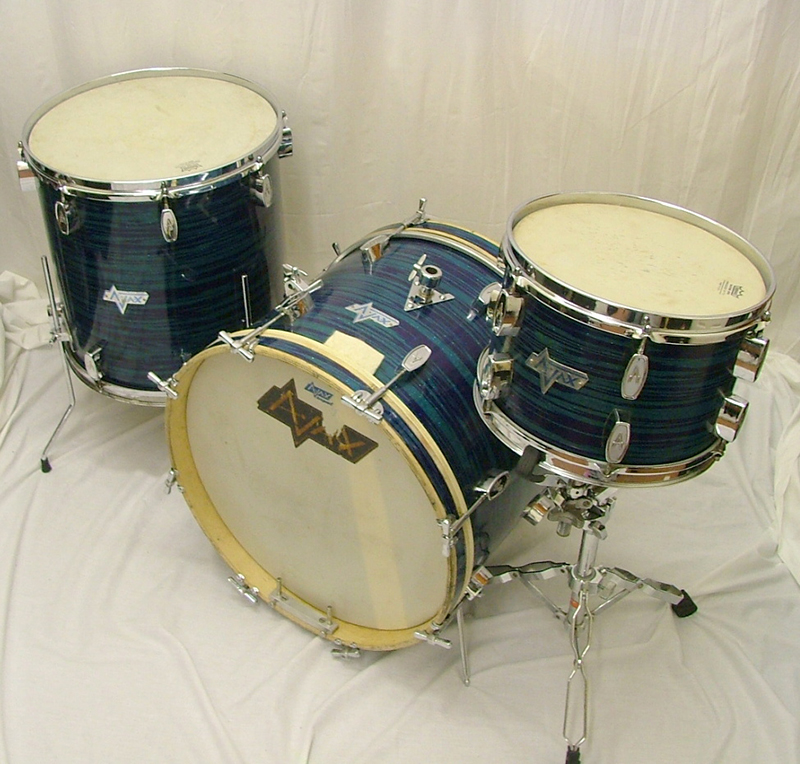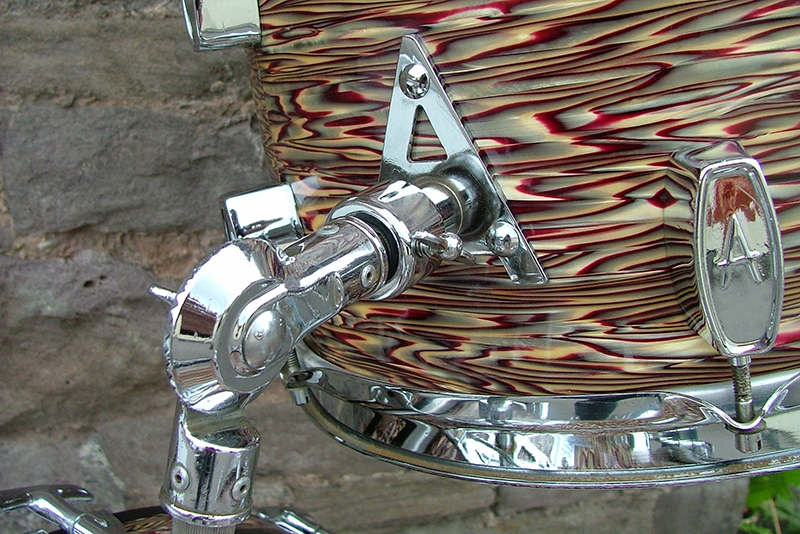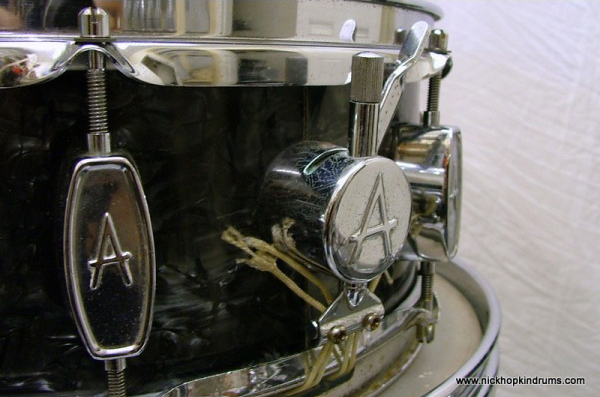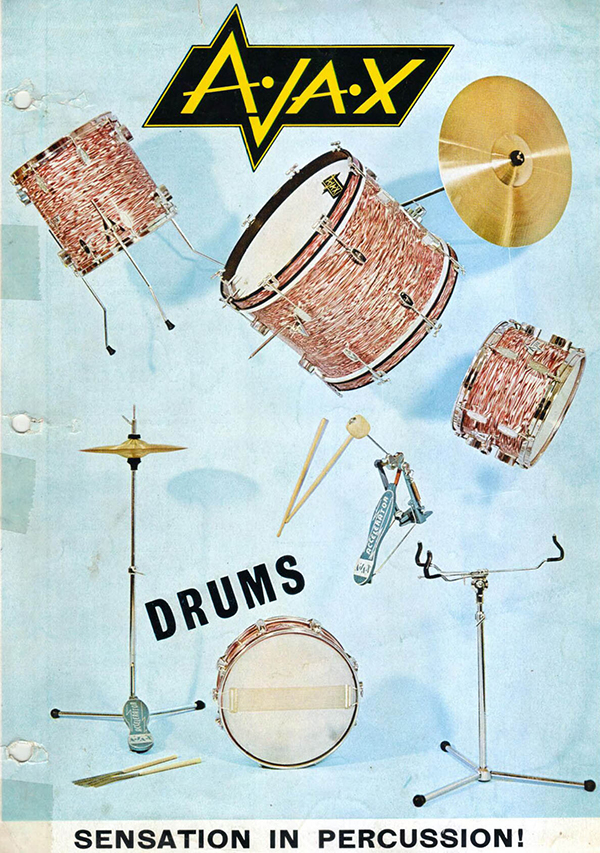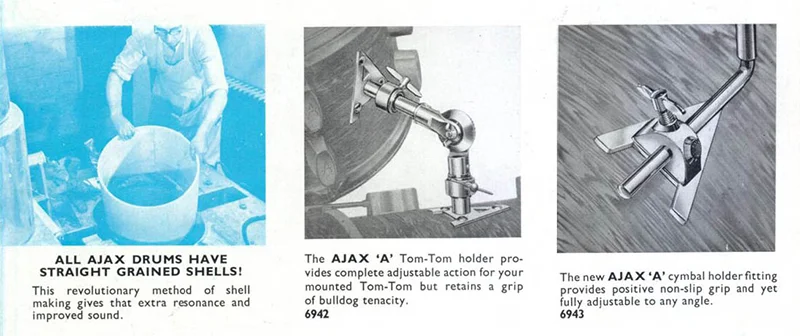Manufactured by Boosey & Hawkes in Edgeware, London, Ajax drums were much like any other English drum set in the 1960’s; standard 20,12,16 configurations, birch shells with teardrop lugs, die cast hoops and glitter finishes. Don’t get me wrong, these were great sounding drums but for me Ajax peaked with the introduction of their ‘Nu Sound’ kits in 1966. Design-wise, these drums stood out from the English drum crowd as much as Hayman did. Unfortunately, this was Boosey & Hawkes’ last attempt to keep the Ajax brand alive and by 1970 they’d disappeared.
As for the tone of these drums, I find them warm and responsive to play.
The drums featured straight grain shell construction, giving these drums a deep resonant tone and despite birch being standard, I have come across sets in mahogany. As for the tone of these drums, I find them warm and responsive to play; A 20,12,14 set with the toms tuned high gives that classic bop sound, while a 22,13,16 in mahogany gives a good low end thud, with plenty of growl to the bass drum and floor tom.
All drums of this period feature internal reinforcement hoops top and bottom, and steel triple flange hoops. The hardware on the shells is really quirky and very different to anything else of that era, except maybe the Trixon/Vox kits that came out of Germany. Single lugs top and bottom were embossed with the letter ‘A’. A lovely design detail is that the tension rods enter the top or bottom of the ‘A’ according to their position on the shell.
The lugs themselves are very thin metal, which are prone to splitting where the tension rod enters the insert; most I’ve taken off kits are filled with foam/sponge to stop the springs rattling. I’ve also found that the mounting holes are prone to snapping off too, when dismantling kits for cleaning, so do take care with these lugs! Don’t let this put you off though, these kits are real eye candy, and sound stunning too.
Other hardware highlights include the lovely 'A' brackets for floor tom and bass drum legs, cymbal holder and tom brackets (which were non-slip). The badges were metal with Ajax printed in bright blue, cut in the shape of the name, held on with 2 pins.
Three kit configurations appeared in the 1966 catalogue; 'Allegro' - 22 x12, 13 x 9,16 x 16; ‘Staccato’ - 20x14, 12x8, 14x14; ‘Forte’ – 22x12, 12x8, 13x9, 16x16. Most common in the burgundy ripple finish (often referred to as ‘raspberry ripple’). Occasionally you’ll come across a set in grey ripple, or white, black or red pearl. The catalogue also lists Mahogany wood finish, but I’ve never seen a set. As always, there are quirky kits that came out of the factory - one of the kits that came through my shop had 10 lugs on the bass drum, another was finished in ‘Blue Streak’ (a Rogers colour, although Boosey & Hawkes manufactured the ‘English Rogers’ drums in the 60’s, so there’s the link). If you ever see a set in a plain colour, it’s been recovered.
To complement the kit there was a choice of two snare drums, both 14x5”; the wooden shell in a colour matching the kit, or the steel shell ‘Metasonic ‘ finished in ‘Sonic Chrome’ plating. Both drums were fitted with a round snare throw with ‘A’ embossed on it, not dis-similar to the Rogers clock face strainer. Both the wood and metal snare are fairly rare in good condition.
A lovely set of drums in any of the above configurations that will turn heads if kept in good condition. It’s amazing how most of these kits that turn up are still in really good, original condition, with no modern hardware additions or extra holes (pleasantly surprising, given that the spares are fairly difficult to source.)

